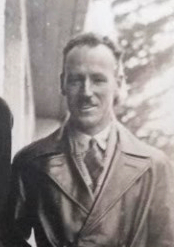Related Research Articles

Sir Frederick McCoy, was an Irish palaeontologist, zoologist, and museum administrator, active in Australia. He is noted for founding the Botanic Garden of the University of Melbourne in 1856.

Marion Mahony Griffin was an American architect and artist. She was one of the first licensed female architects in the world, and is considered an original member of the Prairie School. Her work in the United States developed and expanded the American Prairie School, and her work in India and Australia reflected Prairie School ideals of indigenous landscape and materials in the newly formed democracies. The scholar Deborah Wood stated that Griffin "did the drawings people think of when they think of Frank Lloyd Wright ."

Alfred William Howitt, , also known by author abbreviation A.W. Howitt, was an Australian anthropologist, explorer and naturalist. He was known for leading the Victorian Relief Expedition, which set out to establish the fate of the ill-fated Burke and Wills expedition.
James Hamlyn Willis was an Australian botanist. He described 64 new species of plants, and published more than 880 works including the landmark two-volume A Handbook to plants in Victoria between 1962 and 1973.

Johann Wilhelm Theodor Ludwig von Blandowski, known as William Blandowski, was a German explorer, soldier, zoologist and mining engineer of Polish roots, he is most famous for his exploration of the Murray and Darling Rivers in Australia.

The Royal Society of Victoria (RSV) is the oldest scientific society in the state of Victoria in Australia.

Edward John Dunn was an English-born Australian geologist, winner of the 1905 Murchison Medal.
Charles Smith Wilkinson was an Australian geologist. He became geological surveyor in charge in New South Wales in 1875 and was president of the Royal Society of New South Wales in 1887.
William Noel Benson FRS FRGS was an English-born research geologist and academic active first in Australia and then New Zealand. After studying geology at the University of Sydney, Benson worked temporarily at the University of Adelaide before returning to Sydney as a demonstrator. After winning an 1851 Exhibition Science Scholarship in 1910 he left Sydney to study at the University of Cambridge, where he worked until 1913. He returned to Sydney in 1914 as the Macleay Fellow in Geology, leaving in 1917 to become Chair of the Geology Department at the University of Otago, where for many years he was the only lecturer. During his lifetime he published over 100 papers and won several awards, including the Clarke Medal and the Lyell Medal. He died on 20 August 1957 following his retirement from academia in 1951.

Henry Caselli Richards, was an Australian professor of geology, academic and teacher.

Museums Victoria is an organisation which operates three major state-owned museums in Melbourne, Victoria: the Melbourne Museum, the Immigration Museum and Scienceworks Museum. It also manages the Royal Exhibition Building and a storage facility in Melbourne's City of Moreland.
Henry Joseph Grayson was a British-born Australian nurseryman and scientist, best known as the designer of a machine for ruling diffraction gratings.
Edwin Sherbon Hills was an Australian geologist, a Foundation fellow of the Australian Academy of Science and at the time of his death was regarded as one of Australia's "most eminent scientists and most accomplished geologists".
John S. Clark was a Scottish-born Australian entomologist and myrmecologist known for his study of Australian ants. Born in Glasgow, he developed an interest in entomology at a young age. Clark first arrived in Australia in 1905 and originally worked for the state railways in Queensland. He developed an interest in ants shortly afterwards, collecting his first specimens in North Queensland. He married his first wife, Maggie Forbes in 1908, who bore four children, and died in 1935. He married his second wife, Phyllis Marjorie Claringbulls in 1939 and had two daughters with her. On her suicide in 1943, Clark sent his daughters to an orphanage.
Edmund Dwen Gill was a prolific Australian scientist specialising in geology, museology, palaeontology and geomorphology. He was also known for his work as deputy director of the National Museum of Victoria, president of the Royal Society of Victoria and a research fellow in the CSIRO Division of Applied Geomechanics.
Hyman Herman was a geologist and engineer, and was described as the 'father of Yallourn'. He was director of the Victorian Department of Mines and chair of the Government Brown Coal Advisory Committee. He was instrumental in the establishment of the Victorian State Electricity Commission taking a role as engineer for brown coal.
Elizabeth Arnold Ripper was an Australian geologist, significant for her work in stromatoporoids.
John Francis Lovering is an Australian geologist. He was Professor of Geology at the University of Melbourne from 1969 to 1987 and Vice-Chancellor of Flinders University from 1987 to 1995.

George Baker (1908–1975) was an Australian mineralogist, geologist, university teacher and researcher based in Melbourne, Victoria in the mid-20th century. His teaching and research work was undertaken through positions at the University of Melbourne, CSIRO and the National Museum of Victoria.
Charles Albert Edward Fenner was an Australian geologist, naturalist, geographer and educator.
References
- 1 2 3 4 5 6 7 Thomas A. Darragh, 'Mahony, Daniel James (1878–1944)', Australian Dictionary of Biography, National Centre of Biography, Australian National University, published first in hardcopy 1986, accessed online 28 February 2016
- ↑ Memoirs of the Geological Survey of Victoria, no.9
- ↑ Encyclopedia of Australian Science 2015
- ↑ Monuments Australia